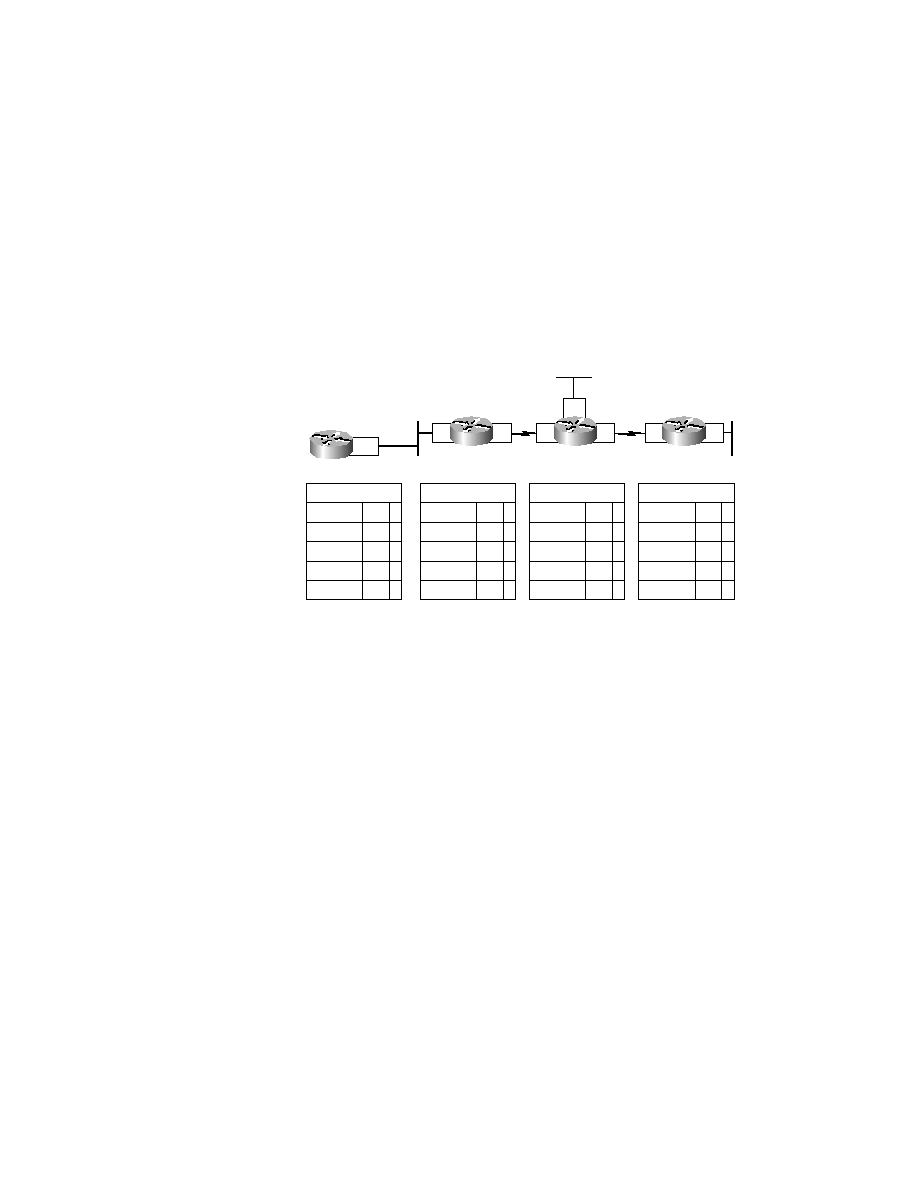
Distance-Vector Protocols
43
In Figure 2.5, the routing tables are complete because they include infor-
mation about all the networks in the internetwork. They are considered con-
verged. (Converging is discussed later in this chapter.) When the routers are
converging, no data is passed. That's why fast convergence time is a plus,
and that's one of the problems with RIP: slow convergence time.
F I G U R E 2 . 5
Converged routing tables
The routing tables in each router keep information regarding the network
number, the interface to which the router will send packets out to get to the
remote network, and the hop count or metric to the remote network.
Verifying RIP
Each routing table should have the routers' directly connected routes as well
as RIP-injected routes received from neighbor routers. The router output
below shows the contents of an RIP routing table:
2621A#sh ip route
Codes: C - connected, S - static, I - IGRP, R - RIP,
M [output cut]
Gateway of last resort is not set
172.16.0.0/24 is subnetted, 5 subnets
R 172.16.50.0 [120/3] via 172.16.10.2,
FastEthernet0/0
172.16.10.0
172.16.20.0
172.16.40.0
172.16.50.0
172.16.30.0
S0
E0
2501A
F0/0
2621A
S1
S0
E0
2501B
E0
S0
2501C
Routing Table
Routing Table
Routing Table
S0
0
172.16.20.0
Routing Table
E0
0
172.16.30.0
S1
0
172.16.40.0
S0
1
172.16.10.0
S1
1
172.16.50.0
F0/0 0
172.16.10.0
F0/0 1
172.16.20.0
F0/0 2
172.16.30.0
F0/0 2
172.16.40.0
F0/0 3
172.16.50.0
E0
0
172.16.10.0
S0
0
172.16.20.0
S0
1
172.16.30.0
S0
1
172.16.40.0
S0
2
172.16.50.0
S0
0
172.16.40.0
E0
0
172.16.50.0
S0
2
172.16.10.0
S0
1
172.16.20.0
S0
1
172.16.30.0
Copyright ©2001 SYBEX , Inc., Alameda, CA
www.sybex.com
